
Development History of China's Orthopedic Implant and Device Industry
China's orthopedic implant and device industry has undergone transformative growth over the past few decades, positioning the country as a global leader in the medical device sector. This remarkable expansion is driven by a combination of economic, demographic, and policy-related factors that have collectively propelled the industry forward.
Rapid Economic Growth
China's robust economic expansion has been a cornerstone of the orthopedic industry's growth. Over the past few decades, the country’s GDP growth has enabled significant investments in healthcare infrastructure, including modern hospitals, specialized clinics, and advanced research facilities. This economic surge has facilitated the adoption of cutting-edge manufacturing technologies, making it possible to produce high-quality orthopedic implants at scale.
Increased Healthcare Investment
Government and private sector investments have transformed China’s healthcare landscape. Modernized medical facilities equipped with state-of-the-art technology have increased access to orthopedic surgeries, driving demand for implants and devices. Public and private hospitals alike have benefited from this influx of resources, enabling them to offer advanced treatments.
Impact on Manufacturing
The economic boom has supported the development of sophisticated production facilities. Chinese manufacturers have invested in advanced machinery and quality control systems, ensuring that orthopedic implants meet stringent international standards. This has allowed China to compete effectively in the global market.
Global Market Integration
China’s economic strength has fostered strategic partnerships with international medical device companies. These collaborations have enhanced the global reach of Chinese orthopedic products, enabling manufacturers to export to diverse markets and integrate into global supply chains.
Aging Population
China’s aging population has significantly increased the demand for orthopedic implants and devices. As life expectancy rises, the incidence of age-related conditions such as osteoarthritis, osteoporosis, and spinal disorders has surged, necessitating advanced orthopedic solutions.
Rising Chronic Diseases
Chronic diseases like osteoporosis and degenerative joint disorders are becoming more prevalent among China’s elderly population. These conditions require interventions such as joint replacements and spinal surgeries, boosting the market for orthopedic implants.
Healthcare Awareness
Increased public awareness of orthopedic health has led to earlier diagnoses and interventions. Patients are now more proactive in seeking treatment for musculoskeletal issues, further driving demand for high-quality implants and devices.
Demographic Opportunities
The aging demographic presents both challenges and opportunities. The growing need for orthopedic care has spurred innovation, as companies develop tailored solutions to address the unique needs of elderly patients, such as minimally invasive implants and faster recovery systems.
Government Support
The Chinese government has played a pivotal role in fostering the growth of the orthopedic industry through supportive policies. These include tax incentives, research subsidies, and streamlined regulatory processes that encourage innovation and market entry.
Policy Incentives
Tax breaks and research grants have incentivized companies to invest in developing new orthopedic technologies. These policies have lowered the financial barriers to innovation, enabling smaller firms to compete with established players.
Regulatory Reforms
Simplified regulatory processes have accelerated the approval of new medical devices, reducing time-to-market and benefiting both manufacturers and patients. These reforms ensure that innovative products reach healthcare providers quickly.
National Health Initiatives
Government-led health initiatives prioritize orthopedic care as part of broader efforts to improve public health. Programs aimed at enhancing healthcare access in rural areas have further expanded the market for orthopedic implants.
Technological Innovation
Chinese orthopedic companies have made significant strides in technological innovation, particularly in materials science, biomechanics, and manufacturing processes. These advancements have resulted in high-performance implants that rival those produced by global leaders.
Advanced Materials
Breakthroughs in biocompatible materials, such as titanium alloys and ceramics, have improved the durability and functionality of orthopedic implants. These materials enhance patient outcomes by reducing complications and extending implant lifespan.
3D Printing Technology
The adoption of 3D printing has revolutionized the production of customized implants. This technology allows manufacturers to create patient-specific implants that improve surgical precision and outcomes, particularly for complex cases.
Robotics in Surgery
Robotic-assisted surgical systems are increasingly used in orthopedic procedures, offering greater precision and reducing recovery times. These systems are being integrated into Chinese hospitals, enhancing the quality of care.
Market Scale Expansion
China’s orthopedic implant market has grown to become one of the largest in the world, driven by rising healthcare spending and an expanding middle class with greater access to medical services.
Domestic Market Growth
The domestic market has seen rapid growth, with hospitals and clinics increasingly adopting locally produced implants. This trend is supported by improvements in product quality and competitive pricing.
Export Opportunities
Chinese manufacturers are exporting orthopedic implants to over 100 countries, capitalizing on global demand for cost-effective, high-quality solutions. This has strengthened China’s position as a key supplier in the global market.
Strategic Partnerships
Collaborations with international distributors have facilitated market penetration in regions such as Europe, North America, and Southeast Asia, enhancing China’s global competitiveness.
Rich Product Categories
The industry offers a diverse range of products, including joint replacements, spinal implants, and trauma devices, catering to a wide array of medical needs.
Joint Replacement Systems
Hip and knee replacements are in high demand, addressing the needs of patients with arthritis and other joint disorders. These products are designed to restore mobility and improve quality of life.
Spinal Solutions
Spinal implants, such as screws, rods, and cages, are critical for treating conditions like scoliosis, spinal fractures, and degenerative disc disease, offering patients improved stability and pain relief.
Trauma Devices
Plates, screws, and intramedullary nails are widely used in trauma surgeries to stabilize fractures. Continuous improvements in design have enhanced their effectiveness and ease of use.
Increased Localization Rate
Domestic products are gaining significant market share, reducing China’s reliance on imported implants and fostering self-sufficiency in the orthopedic sector.
Cost-Effective Alternatives
Locally produced implants offer comparable quality at lower costs, making them attractive to both domestic and international markets. This has driven down healthcare costs for patients.
Quality Improvements
Advancements in manufacturing processes have elevated the quality of Chinese-made implants, enabling them to compete with established foreign brands.
Market Competitiveness
The rise in localization has intensified competition, encouraging companies to innovate and offer affordable, high-quality solutions.
Improvement in Technical Level
Chinese orthopedic companies have made breakthroughs in product design and manufacturing, improving the performance and reliability of their implants.
Biomechanical Advancements
A deeper understanding of biomechanics has led to implants that better mimic natural bone function, improving patient outcomes and reducing complications.
Quality Control
Stricter quality control measures ensure that products meet international standards, such as ISO 13485 and CE certifications, building trust among healthcare providers.
Clinical Validation
Extensive clinical trials validate the safety and efficacy of Chinese-made implants, providing evidence-based assurance to medical professionals and patients.
Current Status of China's Orthopedic Implants and Devices Market
The orthopedic market in China is characterized by intense competition, regional disparities, and evolving regulatory frameworks, shaping its current dynamics.
Fierce Market Competition
Domestic and international companies compete aggressively, with price wars and technological innovation driving market dynamics.
Price Wars
Competitive pricing has made orthopedic implants more accessible to patients, though it has challenged manufacturers’ profit margins.
Technological Rivalry
Companies are investing heavily in R&D to differentiate their products through innovative designs and advanced materials.
Brand Positioning
Building a strong brand and reputation is critical for gaining trust among healthcare providers and patients in this competitive market.
High-End Market Dominance
Imported products continue to dominate the high-end segment, particularly for personalized and complex implants.
Specialized Implants
Customized implants for unique patient anatomies are primarily supplied by foreign manufacturers, though Chinese companies are closing the gap.
Technological Gap
While Chinese firms have made significant progress, they still face challenges in matching the precision and sophistication of high-end imported products.
Investment in High-End R&D
Domestic companies are increasing investments to develop high-end implants, aiming to capture a larger share of this lucrative market segment.
Unbalanced Regional Development
The eastern coastal regions of China have advanced healthcare infrastructure, while central and western regions offer significant growth potential.
Urban vs. Rural Divide
Urban centers have better access to advanced orthopedic care, while rural areas face resource constraints, limiting access to modern treatments.
Market Potential
Underdeveloped regions present opportunities for market expansion as healthcare infrastructure improves, particularly in central and western China.
Government Initiatives
Policies aimed at addressing regional disparities are driving investments in healthcare infrastructure, creating new opportunities for the orthopedic industry.
Stricter Regulatory Policies
China’s regulatory environment for medical devices is becoming more stringent, requiring companies to meet higher safety and efficacy standards.
Compliance Challenges
Stricter regulations demand robust quality assurance and documentation, increasing operational costs for manufacturers.
Innovation Requirements
Companies must innovate to meet regulatory requirements while maintaining cost-effectiveness, balancing compliance with affordability.
Global Standards Alignment
Alignment with international standards, such as FDA and CE certifications, is essential for Chinese companies targeting export markets.
Future Development Trends of Orthopedic Implants and Devices in China
The future of China’s orthopedic industry is bright, with trends pointing toward high-end development, personalization, and global expansion.
High-End Development
Chinese companies are prioritizing the development of high-end products to meet sophisticated clinical needs and compete with global leaders.
Premium Product Lines
Developing premium implants will enhance China’s reputation as a producer of high-quality medical devices, appealing to both domestic and international markets.
R&D Investment
Increased funding for research and development is driving breakthroughs in implant technology, positioning Chinese firms as global innovators.
Clinical Partnerships
Collaborations with hospitals and medical professionals ensure that new products are tailored to meet clinical demands, improving patient outcomes.
Personalized Customization
Customized implants tailored to individual patient anatomies are becoming a key trend, improving surgical precision and patient satisfaction.
Patient-Specific Solutions
Advanced imaging and 3D printing technologies enable the creation of bespoke implants, particularly for complex cases like spinal deformities.
Improved Outcomes
Personalized implants reduce complications and enhance recovery times, leading to higher patient satisfaction and better clinical results.
Scalability Challenges
Scaling personalized solutions cost-effectively remains a challenge, but advancements in manufacturing are helping to address this issue.
Intelligent Development
The integration of artificial intelligence (AI), big data, and robotics is transforming orthopedic surgeries, making them more precise and efficient.
AI in Surgery
AI-powered tools assist surgeons in planning and executing complex procedures, improving accuracy and reducing risks.
Data-Driven Insights
Big data analytics are being used to optimize implant design and predict patient outcomes, enhancing the quality of care.
Robotic Assistance
Robotic systems are increasingly used in orthopedic surgeries, offering unparalleled precision in implant placement and reducing recovery times.
International Development
Chinese companies are actively expanding into overseas markets, enhancing their global competitiveness and market share.
Export Growth
Increasing exports to emerging markets in Asia, Africa, and Latin America offer significant growth opportunities for Chinese manufacturers.
Global Partnerships
Strategic alliances with international distributors and healthcare providers strengthen China’s access to global markets.
Brand Recognition
Building global brand recognition is critical for long-term success, as Chinese companies seek to establish themselves as trusted suppliers.
Innovation-Driven Growth
Continued investment in R&D, particularly in 3D printing and robotics, will drive the industry’s leadership in the global market.
3D Printing Innovations
3D printing enables rapid prototyping and the production of complex implants, reducing costs and improving customization.
Robotics Integration
Robotic systems streamline both manufacturing and surgical processes, enhancing efficiency and precision.
Sustainability Focus
Innovations in sustainable materials and manufacturing processes will shape the industry’s future, aligning with global environmental goals.
Advantages of Choosing a Chinese Orthopedic Implant and Device Distributor
Partnering with Chinese distributors offers numerous benefits for global buyers seeking quality, affordability, and innovation.
Cost Advantage
Chinese manufacturers leverage low production costs to offer competitive pricing, making their products attractive to global markets.
Economies of Scale
Large-scale production facilities reduce per-unit costs, allowing distributors to offer affordable solutions without compromising quality.
Price Competitiveness
Chinese implants meet international standards while maintaining lower prices, benefiting healthcare providers and patients alike.
Global Affordability
Cost advantages enable healthcare systems worldwide to provide high-quality orthopedic care at reduced costs.
Product Diversity
Chinese companies offer a wide range of orthopedic products, catering to diverse clinical needs and market demands.
Broad Product Lines
From joint replacements to spinal implants and trauma devices, Chinese distributors provide comprehensive solutions.
Specialized Offerings
Niche products, such as sports medicine implants and maxillofacial systems, are increasingly available to meet specific needs.
Market Adaptability
Chinese manufacturers quickly adapt to changing market demands, ensuring their product lines remain relevant and competitive.
Customized Services
Chinese distributors excel in providing tailored solutions, meeting the specific requirements of healthcare providers and patients.
Bespoke Implants
Custom implants designed to match individual patient anatomies improve surgical outcomes and patient satisfaction.
Flexible Manufacturing
Advanced manufacturing capabilities allow for rapid customization, ensuring products meet unique clinical needs.
Client Collaboration
Close collaboration with clients ensures that products are designed and delivered according to specific requirements.
Quick Response
Chinese companies are agile, responding quickly to market changes and launching new products to meet emerging needs.
Rapid Product Development
Streamlined R&D processes enable fast product rollouts, keeping Chinese distributors ahead of market trends.
Supply Chain Efficiency
Robust supply chains ensure timely delivery of products, minimizing delays for healthcare providers.
Market Responsiveness
Chinese distributors actively incorporate customer feedback, ensuring their products remain competitive and relevant.
Improved After-Sales Service
Chinese companies are enhancing their after-sales support to provide comprehensive care to customers.
Technical Support
Dedicated teams offer technical assistance to healthcare providers, ensuring proper use of orthopedic devices.
Warranty Programs
Robust warranty programs build confidence in the reliability and longevity of Chinese-made implants.
Training and Education
Distributors provide training programs to ensure healthcare professionals are well-equipped to use their products effectively.
Top 10 Orthopedic Implant and Instrument Distributors in China
Below is a detailed overview of the leading orthopedic implant and device distributors in China, recognized for their quality, innovation, and global reach.
1. Changzhou Xc Medico Technology Co., Ltd.
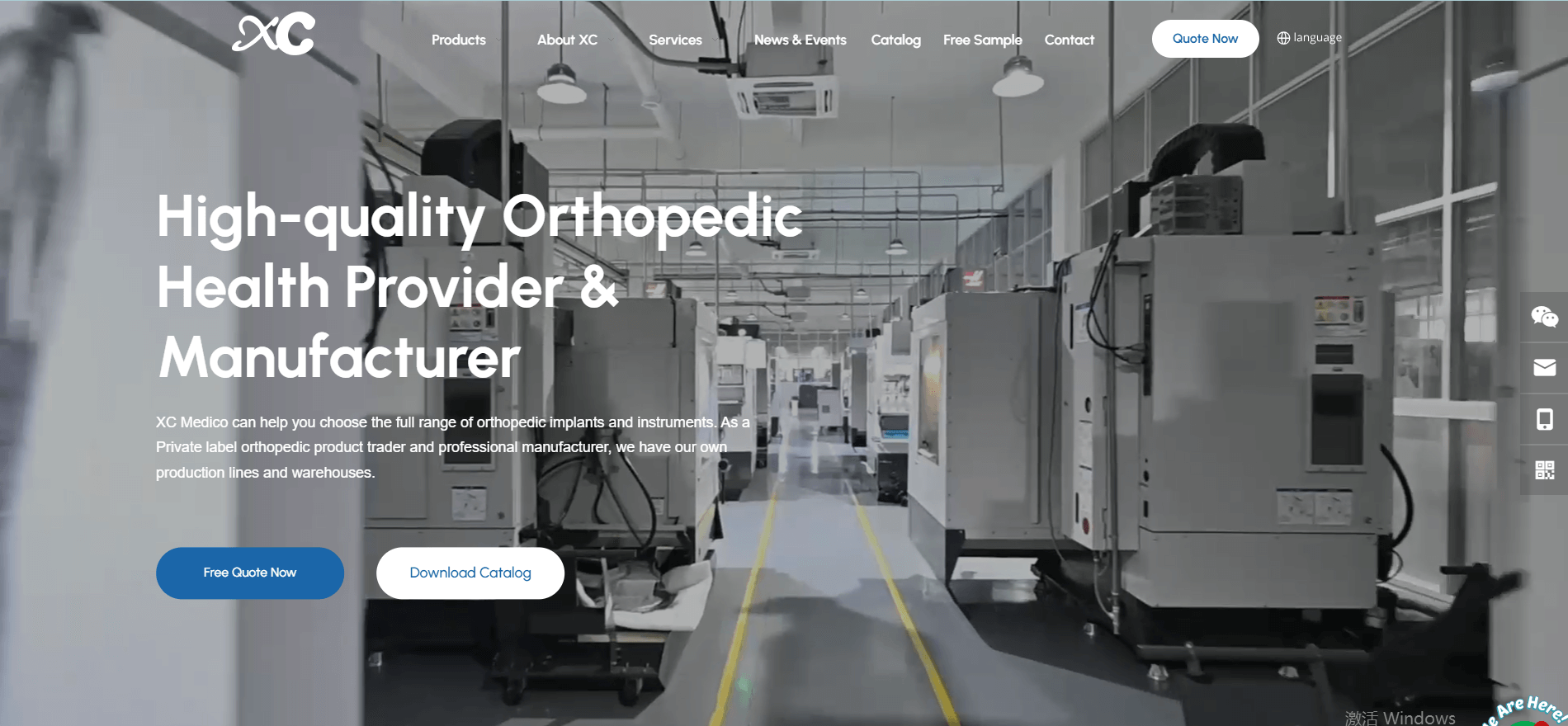
XC Medico is a leading manufacturer and distributor of orthopedic implants and instruments, offering a comprehensive range of products, including trauma, spine, intramedullary nails, CMF/maxillofacial, sports medicine, joint, external fixation, and medical power tools. Exporting to over 30 countries, XC Medico holds CE and ISO 13485 certifications, with FDA approval pending.
Production Capabilities
With 12 production lines and 121 advanced machines from brands like Mazak, Citizen, and Haas, XC Medico ensures high-quality output. Their state-of-the-art facilities enable the production of complex implants with precision.
Certifications and Patents
The company holds 12 Class-III and 2 Class-II product registrations, along with 4 invention patents and 30 utility model patents. These certifications and patents reflect XC Medico’s commitment to innovation and quality.
Clinical Expertise
XC Medico collaborates with international experts, research institutions, and hospitals to ensure product safety, reliability, and practicality. This clinical expertise enhances the effectiveness of their implants.
2. Jiangsu Jinlu Group Medical Device Co., Ltd.
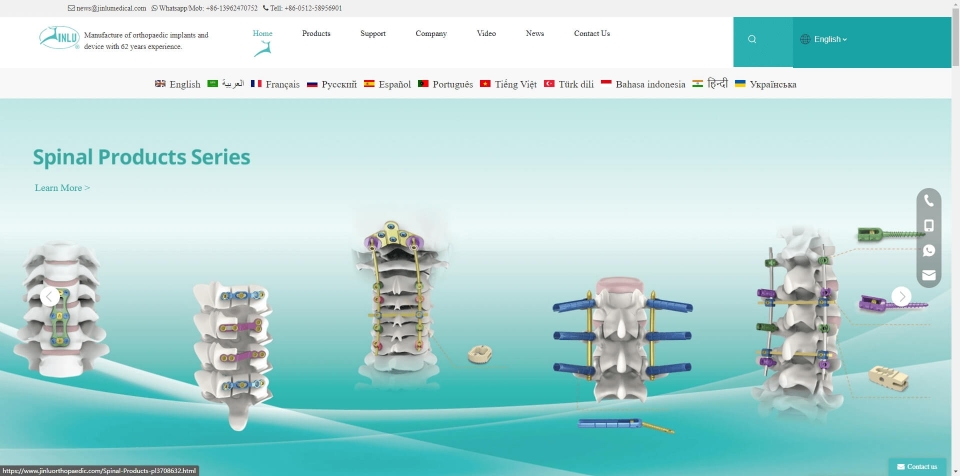
Established in 1958, Jiangsu Jinlu Group is a key player in China’s medical device industry, based in the international trading port of Zhangjiagang. The company specializes in orthopedic implants, including bone plates, screws, locked intramedullary nails, and spinal retainers.
Product Range
Jinlu’s product portfolio includes orthopedic apparatus, as well as solutions for general surgery, chest, and gynecology. Their “Jinlu” brand is recognized for its reliability and quality.
Industry Leadership
As a director company of the China Medical Apparatus Industry Association, Jinlu plays a leading role in shaping the national medical device sector.
Global Presence
Located in a strategic trading port, Jinlu exports to multiple countries, leveraging its geographic advantage to access global markets.
3. Canwell Medical Co., Ltd.

Founded in 1994, Canwell Medical is one of China’s largest designers and manufacturers of orthopedic implants. The company undertakes OEM services for globally recognized brands and has established strategic partnerships with international firms.
OEM Expertise
Canwell produces high-quality OEM products for top international brands, ensuring compliance with global standards.
Global Reach
The company exports to numerous countries, with a strong presence in key markets like Europe and North America.
Innovation Focus
Canwell invests heavily in R&D to develop innovative orthopedic solutions, maintaining its competitive edge.
4. Well Trust (Tianjin) Tech. Co., Ltd.
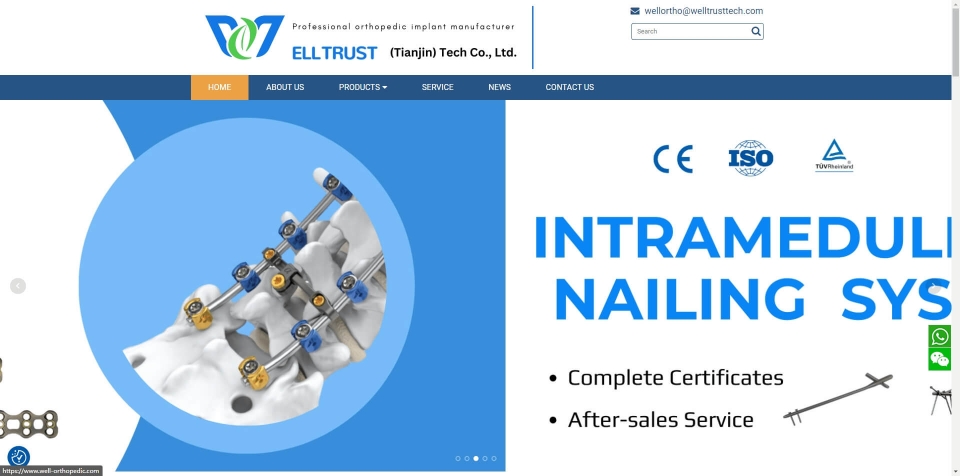
Established in 2005, Well Trust specializes in veterinary orthopedic implants and surgical tools, exporting to over 100 countries. Based in Tianjin, the company holds CE and ISO 13485 certifications and is known for its high-quality products and excellent after-sales service.
Veterinary Focus
Well Trust offers specialized solutions for veterinary surgeries, including surgical power tools and external fixators.
Global Distribution
The company has expanded its business to over 100 countries, supported by efficient logistics and partnerships with express companies like DHL and FedEx.
Customer Support
Well Trust’s well-trained sales team provides responsive customer service, earning positive feedback worldwide.
5. Suzhou Youbetter Medical Apparatus Co., Ltd.
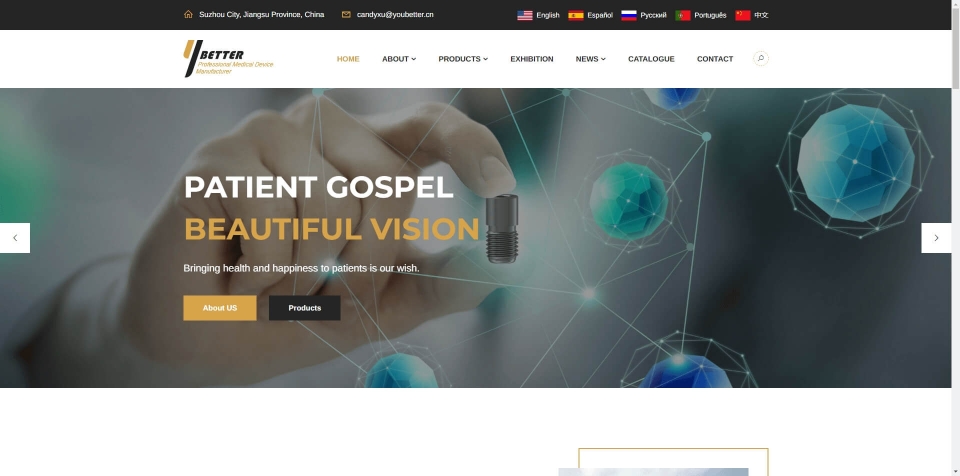
Suzhou Youbetter is a specialized manufacturer of orthopedic instruments, with a production facility spanning over 30,000 square meters. The company focuses on research, development, and high-quality manufacturing.
Production Scale
Youbetter’s extensive facilities enable large-scale production, meeting the demands of both domestic and international markets.
Research Focus
The company invests in R&D to develop innovative medical instruments, staying ahead of industry trends.
Quality Assurance
Strict quality control ensures that Youbetter’s products meet international standards, enhancing their reliability.
6. Changzhou Meditech Trading Co., Ltd.
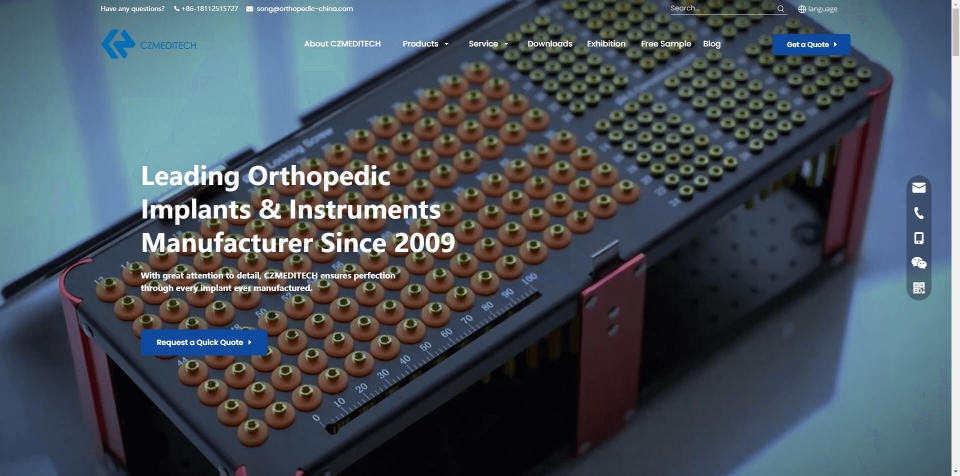
CZMEDITECH has been a leader in orthopedic manufacturing for over 13 years, supplying to more than 2,500 clients in 70+ countries. Based in Jiangsu, the company operates advanced production facilities and is committed to innovation and quality.
Global Clientele
CZMEDITECH serves a diverse international client base, providing high-quality orthopedic solutions.
Advanced Manufacturing
The company uses cutting-edge equipment to produce implants that meet the highest industry standards.
Health Mission
CZMEDITECH is dedicated to improving global health through innovative and affordable products.
7. Double Medical Technology Inc.

Double Medical is a global healthcare solutions provider with 13 subsidiaries and three hospitals. The company specializes in orthopedics, wound management, neurosurgery, and general surgery, with a strong presence in the domestic market.
Comprehensive Solutions
Double Medical offers a wide range of medical products and services, addressing diverse healthcare needs.
Global Operations
With operations worldwide, the company is committed to improving patient outcomes through innovative technologies.
Innovation Commitment
Double Medical invests in advanced technologies to drive healthcare advancements, maintaining its leadership position.
8. Shandong Weigao Orthopedic Device Co., Ltd. (Wego Ortho)
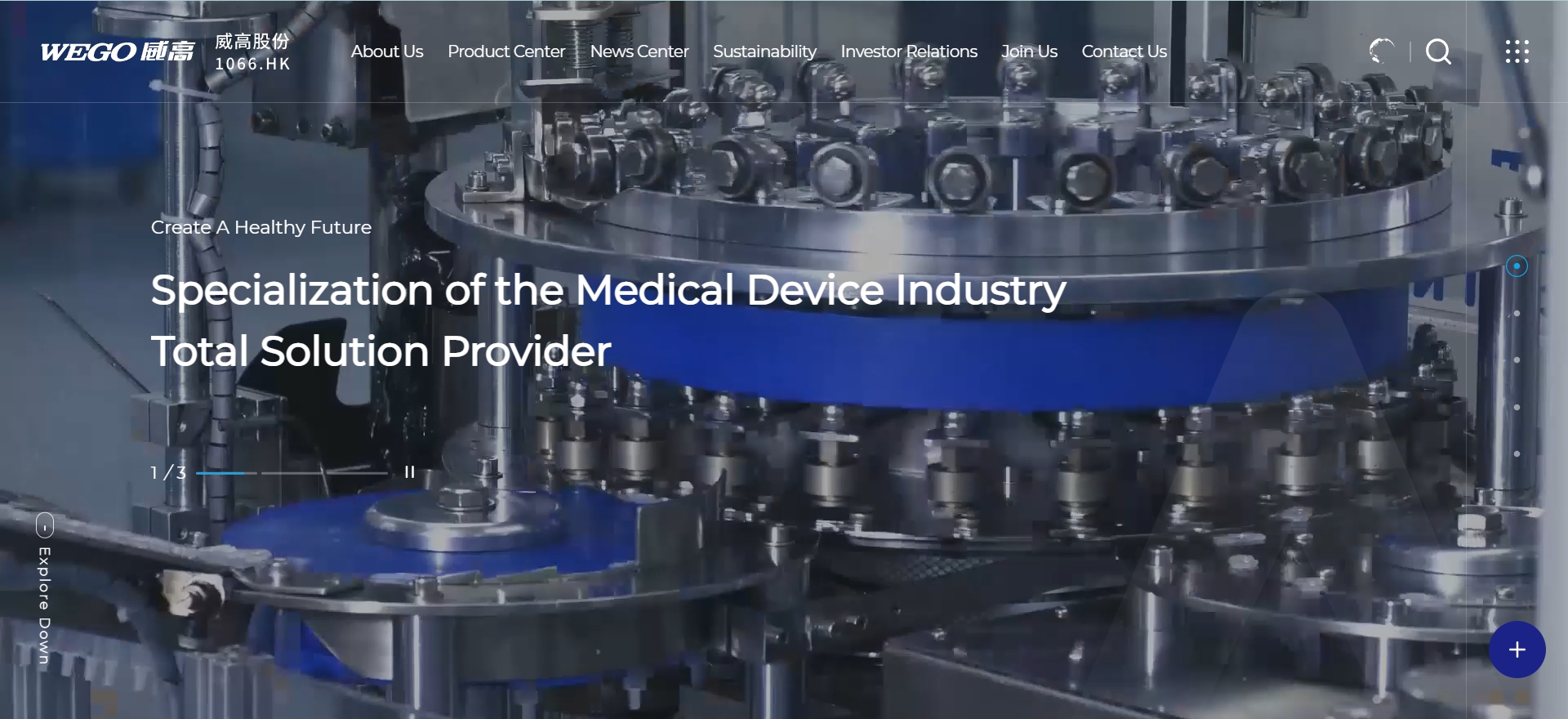
Wego Ortho, a subsidiary of Weigao Group, is a leading manufacturer of orthopedic implants, specializing in spine, trauma, joint, and sports medicine solutions. Based in Weihai, Shandong, the company exports to over 100 countries.
Advanced R&D
Wego Ortho’s strong R&D team drives innovation in orthopedic solutions, focusing on 3D printing and intelligent navigation.
Global Certifications
The company holds ISO 13485, CE, and FDA certifications, ensuring compliance with international standards.
Technological Leadership
Wego Ortho is at the forefront of high-end intelligent manufacturing, positioning China as a global leader in orthopedics.
9. Sichuan Chen'anhui Technology Co., Ltd.
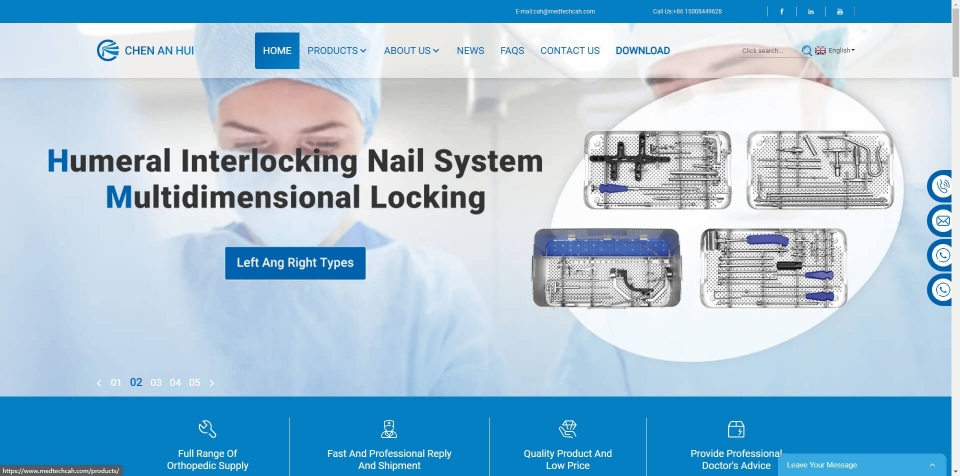
Established in 2009, Sichuan Chen'anhui specializes in orthopedic medical devices and consumables, with advanced production facilities and a comprehensive product line. The company provides surgical support services in collaboration with medical professionals.
Production Excellence
Chen'anhui operates Class 10,000 clean workshops, ensuring the safety and effectiveness of its products.
Clinical Support
The company offers surgical assistance, working with professors and doctors to ensure proper implant installation.
Product Range
Chen'anhui provides a full range of orthopedic products, from bone plates to spinal screws and external fixators.
10. Suzhou Sunan Zimmered Medical Instrument Co., Ltd.
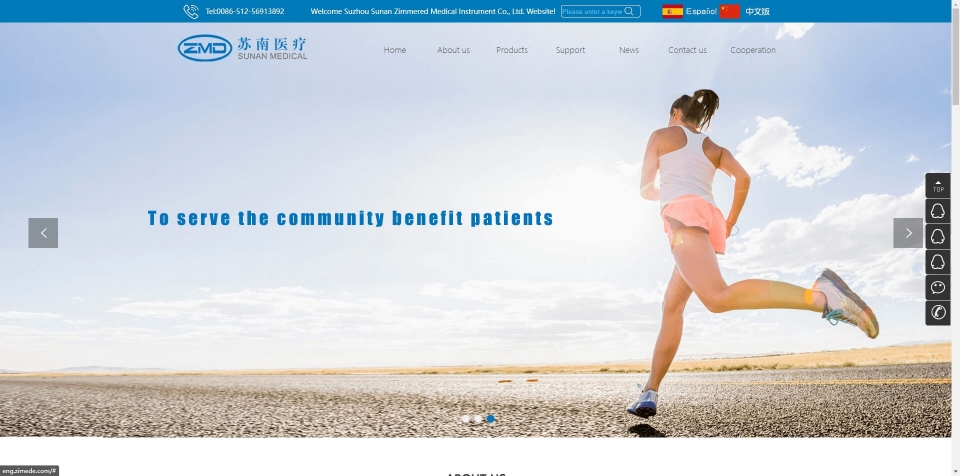
Suzhou Sunan Zimmered has over two decades of experience in orthopedic implants, offering bone plates, screws, and spinal systems under the ZIMEDE brand. The company operates a GMP-compliant clean workshop and holds CE and ISO certifications.
Manufacturing Expertise
Advanced CNC machines and testing equipment ensure high-quality production, meeting global standards.
Clinical Assurance
Collaborations with orthopedic experts ensure the reliability and effectiveness of Sunan Zimmered’s products.
Customer Focus
The company prioritizes customer satisfaction, delivering high-quality products and exceptional service.
Conclusion
China’s orthopedic implant and device industry is poised for a promising future, driven by rapid economic growth, technological innovation, and supportive government policies. The industry’s focus on high-end development, personalized customization, and intelligent technologies positions it to meet global healthcare demands. Partnering with Chinese distributors offers significant advantages, including cost-effectiveness, product diversity, customized services, and responsive support. By leveraging China’s robust manufacturing capabilities and commitment to innovation, stakeholders can effectively address the growing global demand for orthopedic solutions, making Chinese distributors ideal partners for businesses seeking to expand their influence in the global market.
English
Русский
简体中文
繁體中文
العربية
Français
Español
Português
Deutsch
italiano
日本語
한국어
Nederlands
Tiếng Việt
ไทย
Polski
Türkçe
አማርኛ
ພາສາລາວ
ភាសាខ្មែរ
Bahasa Melayu
ဗမာစာ
தமிழ்
Filipino
Bahasa Indonesia
magyar
Română
Čeština
Монгол
қазақ
Српски
हिन्दी
فارسی
Kiswahili
Slovenčina
Slovenščina
Norsk
Svenska
українська
Ελληνικά
Suomi
Հայերեն
עברית
Latine
Dansk
اردو
Shqip
বাংলা
Hrvatski
Afrikaans
Gaeilge
Eesti keel
Māori
සිංහල
नेपाली
Oʻzbekcha
latviešu
অসমীয়া
Aymara
Azərbaycan dili
Bamanankan
Euskara
Беларуская мова
भोजपुरी
Bosanski
Български
Català
Cebuano
Corsu
ދިވެހި
डोग्रिड ने दी
Esperanto
Eʋegbe
Frysk
Galego
ქართული
guarani
ગુજરાતી
Kreyòl ayisyen
Hausa
ʻŌlelo Hawaiʻi
Hmoob
íslenska
Igbo
Ilocano
Basa Jawa
ಕನ್ನಡ
Kinyarwanda
गोंगेन हें नांव
Krio we dɛn kɔl Krio
Kurdî
Kurdî
Кыргызча
Lingala
Lietuvių
Oluganda
Lëtzebuergesch
Македонски
मैथिली
Malagasy
മലയാളം
Malti
मराठी
ꯃꯦꯇꯥꯏ (ꯃꯅꯤꯄꯨꯔꯤ) ꯴.
Mizo tawng
Chichewa
ଓଡ଼ିଆ
Afaan Oromoo
پښتو
ਪੰਜਾਬੀ
Runasimi
Gagana Samoa
संस्कृत
Gaelo Albannach
Sepeti
Sesotho
chiShona
سنڌي
Soomaali
Basa Sunda
Wikang Tagalog
Тоҷикӣ
Татарча
తెలుగు
ትግንያውያን
Xitsonga
Türkmençe
संस्कृत
ئۇيغۇرچە
Cymraeg
isiXhosa
ייִדיש
Yorùbá
isiZulu














